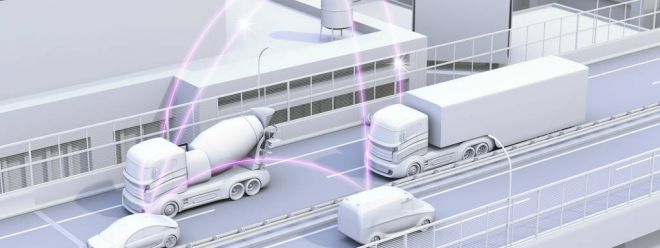Six ways 5G could save global supply chains

5G supports real-time data at the point of origin, which can
be used to quickly identify supply chain issues in inventory and predict future
disruptions.
For decades, we have taken the supply chain for granted.
When you needed a part to be manufactured, you booked the order and shipped it.
More recently, the lingering New Crown Pneumonia crisis has shaken many
managers out of their comfort and complacency with global distribution systems,
with many seeking new ways to ensure viability and resilience. There is a
growing focus on an emerging set of standards and technologies - 5G networks -
that could help lay a solid foundation for a global business network.
This is the gist of a special report prepared for the World
Economic Forum by Aongus Hegarty, President of Dell Technologies International
Markets. 5G revolution "means more than just faster internet; 5G is deeper
connectivity, laying the foundation for a fourth industrial revolution that
will create higher levels of efficiency across all industries. This will create
greater efficiency across all industries."
Hegarty noted that the recent coronavirus crisis - and the
ongoing impact of supply chain disruptions, labour shortages and cyber security
issues - has demonstrated the need for a more resilient business
infrastructure. This resilience can be found in an open 5G network - wireless,
software-based and automated, rather than built on legacy systems - which
creates "better economic opportunities and job security, provides students
with academic support, and revitalise local businesses." It can also open
the door to new innovative technologies such as self-driving cars,
energy-efficient cities and smart agricultural systems."
The coronavirus crisis has exposed "many supply chain
inefficiencies and vulnerabilities, so businesses need to address them and
prepare for future disruptions," Hegarty explained. "Businesses
should invest time and resources in reassessing their supply chains to find and
address weaknesses. Once vulnerabilities are identified, they can use
technological advances such as automated systems and data-driven insights to modernise
their supply chains and increase resilience." This is where 5G networks
show their value.
Here are six ways in which 5G is actively adapting the
supply chain, as documented by Hegarty and other industry experts.
Real-time data: 5G supports real-time data at the point of
origin, which "can be used to quickly identify supply chain problems in
inventory, predict future disruptions, and model solutions," Hegarty says.
Gary Wollenhaupt writes in Supply Chain Dive that the adoption of 5G to transmit
data within and between supply chain partners' systems means reducing "the
latency between when a sensor detects an event and when the system recognises
it". "For the supply chain, reducing latency will enable
vehicle-to-vehicle communication for automated trucks and warehouse robots.
Processing power will be able to work closer together, making sensors and
mobile devices more capable."
Smart inventory management: "5G's high-speed network
ensures that the collection, delivery and archiving of goods and products is
more transparent and efficient for businesses," writes Amit Gautam in
Forbes. "5G can address three key areas in inventory and warehouse
management: optimising key processes, enabling remote maintenance and control,
and deploying automated delivery vehicles." For example, supermarket
chains could use 5G networks to "optimise the handling, packaging and
delivery of merchandise with network solutions that reduce downtime and
optimise the entire order processing system using robots" - which requires
higher bandwidth, speed and latency capabilities than those offered by Wi-Fi ,
speed and latency capabilities.
Greater supply chain visibility: "Just-in-time
manufacturing can track the movement of parts to the assembly line in real time
compared to relying solely on planned arrivals," says Wollenhaupt.
"Some large shippers are already using 5G-enabled sensors to improve
product tracking in their warehouses. Industries shipping large numbers of
small packages or combining products into kits will be able to track individual
products and components. 5G will make monitoring of temperature, humidity and
other environmental factors easier and more effective for sensitive
products."
Tracking and tracing: "Today, most companies still use
manual controls to track and trace products," says Gautam. "With 5G,
logistics companies can automatically mark, track and record all shipments,
thus solving a multitude of problems such as lost shipments, misplaced
containers, counterfeiting and smuggling, as well as often inefficient manual
processes."
Product monitoring: "5G allows you to monitor at SKU
level so you can have a more detailed picture of what status your products are
in, where they are and when they will reach your customers," says
Wollenhaupt.
Fleet management: Gautam says 5G supports "real-time
response regarding vehicle safety status and collision avoidance".
"Self-driving cars use advanced sensors and collision avoidance
capabilities to stay in their designated lanes, avoid collisions, deploy
real-time delivery status updates, and seek emergency services. But all of this
is only possible with the reliability and security of a low-latency network.
This network infrastructure not only becomes easy to design for deployment
alongside 5G, but also increases the potential automation capabilities of these
vehicles."
Translated with www.DeepL.com/Translator (free version)